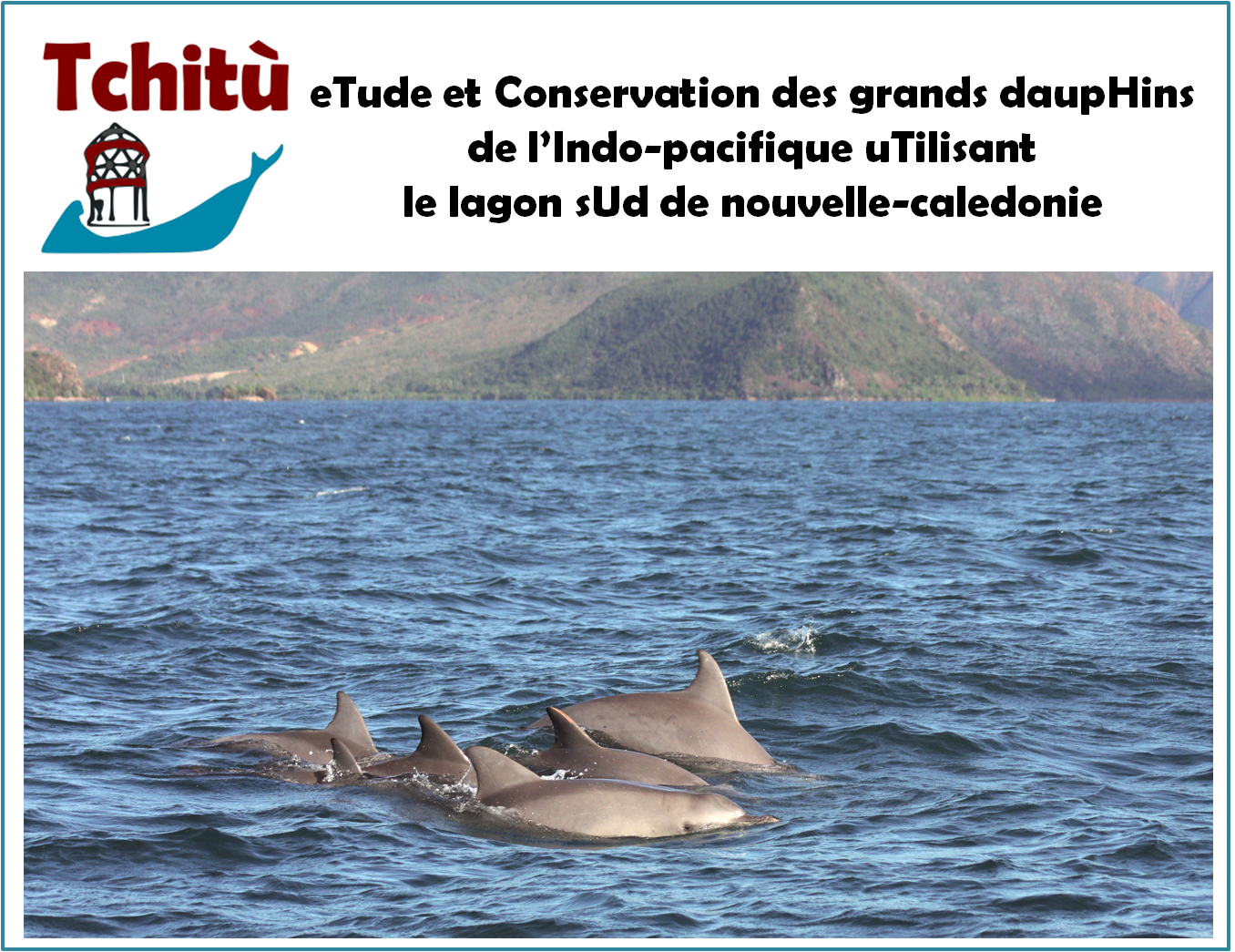Tchitù : Study and Conservation of the Indo-Pacific bottlenose dolphins using the Southern lagoon of New Caledonia
Context
Recently
recognized as a species in its own, the Indo-Pacific bottlenose
dolphin is one of the most frequently observed cetaceans in the
coastal waters of New Caledonia. Studies conducted over the past
twenty years on this species have shown demographic and genetic
isolation and the existence of a minimum of six distinct populations
around the Grande Terre, main island of New Caledonia. Because of its
coastal habitat, this species is threatened by anthropogenic
pressures such as fragmentation or degradation of its habitat. The
peripheral location of New Caledonia at the southeastern limit of its
range increases the vulnerability of the species, as populations are
potentially less resilient and more vulnerable.
Twenty years of
data have been collected on this species in the Southern Lagoon but
to date the population or populations that are present there remain
unknown to the scientific actors as well as the managers. This lack
of knowledge does not allow to establish a strategy of conservation
of this species and to ensure their preservation.
Objectives
A
first analysis of the data collected between 1997 and 2008 made it
possible to count about 130 individuals. However, the data collected
during the last ten years remain to be analyzed in order to be able
to estimate the current composition of this population, to understand
how it uses the Southern Lagoon and to know the exchanges between the
different groups of dolphins within this vast area. In addition, a
genetic analysis performed on Southern Lagoon dolphins between 2008
and 2009 showed that they have genetic similarities with some
adjacent populations such as Noumea. The study of the potential
exchanges between the Indo-Pacific bottlenose dolphins of the
Southern Lagoon and those of the adjacent regions will help to
understand the spatio-temporal evolution of the population structure
of the Southern Lagoon and to estimate its degree of
isolation.
Variations in the composition of the population may
result from natural or anthropogenic disturbances. The main threats
to marine mammals are disturbance from shipping, habitat degradation
and fishing. In New Caledonia Southern Lagoon, maritime traffic has
expanded significantly between 1995 and 2008, increasing the
potential risk of interaction with marine mammals in this region. The
study of the anthropogenic pressure on bottlenose dolphin population
can be made from the analysis of the marks present on their dorsal
fins: these marks may be due to interactions between animals but they
may also indicate collisions or interactions with fishing gear. Thus,
this analyze will help to estimate the potential pressures on the
population.
Funded by the CCCE (Customary Environmental Advisory Committee), the TCHITU project will provide a state of knowledge of this population by answering the following questions:
-
What is the composition of the Indo-Pacific bottlenose dolphin
population?
- How does this population use the vast area of
Southern Lagoon?
- Are there exchanges with neighboring
populations?
- What potential anthropogenic pressures is this
population subject to?
Financement :
CCCE (Comité Consultatif Coutumier Environnemental)
Partners :
CCCE (Comité Consultatif Coutumier Environnemental)
Opération Cétacés


